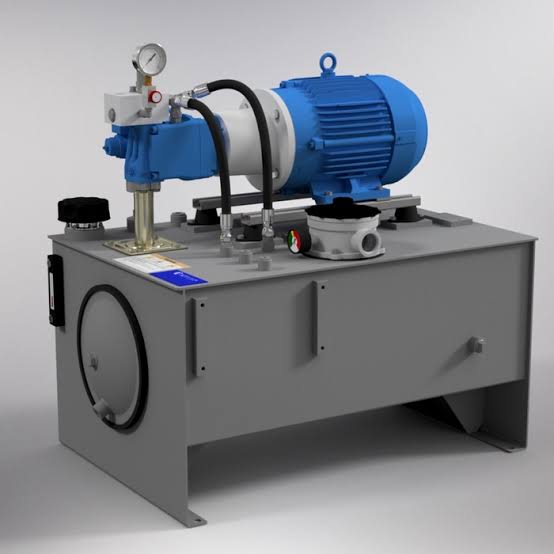The battle of Apple vs Intel has been intense ever since the M1 chip came out. Intel responded, first with claims and then with a massive challenger.
The fact is that Apple’s M1 chip is a worthy contender alongside Intel and AMD. Last year, it might have been a no-brainer for raw performance, despite compatibility. Now it looks like Intel CPUs are looking to reclaim the throne.
For an in-depth look at Apple vs Intel CPUs, check out our guide below.
Putting the Apple vs Intel Myth to Bed
Once upon a time, Apple was an industry leader. It pioneered the age of the modern smartphone with its first-ever iPhone, and the rest of the world followed. Before that, the intuitive nature of its macOS was a game-changer in its own right.
While Windows PCs caught up and continued to push the boundaries of computing tech, Apple settled into a complacent rhythm.
They rested on the laurels of their MacBooks designs, such as the MacBook Pro and Air. While premium devices in their own rights, Apple had a major problem. In terms of raw specs, they often lagged behind Windows alternatives at the same price.
That said, it wasn’t always a battle of Apple vs Intel. In fact, for over a decade, Apple attempted to bridge the gap by utilizing Intel processors. The partnership they developed with Intel was quite fruitful.
Both parties benefited and pushed each other bit by bit. Then the global pandemic happened, and this relationship fell apart. Supply chain shortages, especially silicon chips, crippled much of the computing world.
Intel couldn’t supply enough chips, which manifested itself on store shelves. Many laptops started to utilize whatever processors and other components they could find. This happened on all operating systems and for desktops, too.
Often, it led to bottlenecked machines getting sold in major retail stores. Tim Cook, CEO of Apple, blamed Intel and the shortage for why Macs weren’t selling as well. After trials and tribulations, this led to the introduction of Apple’s in-house M1 chip.
An Apple Game Changer
The creation and announcement of Apple’s M1 chip were a long time coming. It met with thunderous applause from Apple’s faithful and cynicism from Windows die-hards. It promised processing performance over and above anything previously seen in a Mac.
Not only that, but it claimed to crush anything that Intel or AMD could throw at it. Intel fired back with claims its 11th-Gen Tiger Lake processors still held the edge. Third-party testing seemed to show a more complicated picture.
The Complicated Truth
The ARM silicon M1 chips outperform even 11th-Gen Intel processors in some benchmark tests. For years, Intel and its “core” processor tech was the gold standard for what a processor could do. This is still the case in many ways, as peak performance at Intel’s high-end still edges out its major Windows competitor – AMD.
However, the difference between the M1 and previous Mac intel processors is laughable. When it comes to raw performance across the board, the picture is muddier at the high end. Apple’s M1 series, including M1 Max, goes toe to toe with Intel’s best.
There are tests in which an Intel Core i7-1185G7 edges out the M1, and there are tests where the M1 comes out on top. While average processing performance seems to favor Apple, there is more to consider.
Intel is rising to the challenge of reclaiming its unquestioned superiority. They’re switching to 10nm chips, and 12th-Gen processors are already on the market. This makes the debate over Apple vs Intel CPU much harder than before the M1 or even during the initial battle.
One thing is for sure, though: a return to stiff competition is a win for everyone. Apple’s game-changing chip is the shake-up Intel and AMD needed to raise the bar once again.
What Intel Offers Now
Intel came off on the back foot in the early days of the M1 vs Intel battle. When early tests suggested Apple’s claims weren’t exaggerated, Intel needed to save face. They came up with their own tests to demonstrate their competence.
Intel claimed that some 11th-Gen processors were 30% faster at certain tasks. These included word processing and browsing on Google Chrome. They also made claims about AI processing, but these were often niche.
Intel’s 12th-Gen Alder Lake Processors
When it comes to talking about the pros and cons of Intel, 12th-Gen Alder Lake speaks for itself. The major cons are high-end pricing to go with high-end performance and having to wait for more.
Intel has yet to release its full mid- and lower-priced 12th-Gen processors. This wait could prove inconvenient for those looking for cost-friendly options. As of now, Intel has started 2022 with a major bang, focusing on its high-end flagships.
Alder Lake offers a range of i9 to i5 options for both desktop and mobile that leave the competition in the dust. Some likened it to Intel’s introduction of its “core” architecture back in 2006. That gave Intel a 40% advantage back then and ensured over a decade of dominance.
Intel’s Alder Lake improves the hybrid model of eight performance and eight efficiency cores. This gives you 16 cores to work with and lets you optimize high-end performance. On laptops, the high-end i9s and i7s offer 14 cores: six for performance and eight for efficiency.
The performance cores on the i9-12900H and HK let you boost to 5.0 GHz per core – an unprecedented feat for a laptop. We could also talk about PCIe Gen 5 support or Thunderbolt 4 on laptops, but we’d be here all day.
Neither AMD nor Apple has an answer to Alder Lake so far. These 12th-Gen Intel processors dominate most gaming and performance tests across the board. They also utilize new Laminar cooling systems to make sure performance is king.
Waiting for Intel
Waiting for mid-range models may also be worth it. High-end 12th-Gens are currently priced around the same or only $15 more than 11th-Gens. This is despite offering more bang for the buck.
In all likelihood, mid-range and lower-priced models will share similar price comparisons. Unless Apple raises the ante again with its M1 chips soon, your best bet will likely be a new Intel processor. That is at least as far as comparable price points go.
The Intel Difference
When discussing the benefits of Intel chips, there’s more than raw performance. Yes, 12th-Gen Alder Lake is pulling ahead of the pack, but Intel has other advantages. One major factor has to do with compatibility.
Apple has done a commendable job with the M1 line of chips. M1 Max is a beast in its own right and whatever is next is sure to keep Intel on their toes. That said, the obstacle of Windows compatibility is a thorn in its side.
Some games and many programs have indeed worked on Mac support in recent years. However, this process is excruciatingly slow, and the vast majority of games and software remain optimized for Windows. Apple does offer Mac-specific alternatives to popular software – but for many, it’s not enough.
Using emulators and running translation software like Rosetta 2 is a hassle. Many users don’t want to deal with it, even if the M1 chip reduces noticeable hiccups. When it comes to Mac software, very few people want to learn a new UI or program if they’re used to Windows versions.
A Variety of Configurations
Going with Intel gives you far more variety and flexibility. This is because of native Windows support. You’ll also be better able to find a mixture of components and specs that best suits your needs.
The ability to choose and customize is a big deal. Compatibility issues create bottlenecks. A great example is using a weak cooling system or power supply/battery to run a high-end Intel processor.
When you go with a Mac, you’re often stuck with a prearranged configuration. Some of these might not get the most out of the M1 processor, depending on the load. Many processors might throttle performance to avoid running at high temperatures, for example.
Not having enough power, in general, can also lead to a high-end CPU underperforming. It’s very easy to leave processing power on the table if things aren’t configured well.
This is where the Intel Evo vs Apple M1 conversation comes in. The variety of possible configurations has led Intel to create a certification program. The Intel Evo badge makes sure all laptops meet a certain performance standard. This helps the consumer make a more informed decision.
It’s telling that Intel ran the Apple M1 through its tests and claimed it failed eight out of 21 of them. As powerful as the M1 might be in isolation, there’s more to a good PC. For a deeper explanation of Intel Evo and a list of compliant laptops, check out www.lenovo.com.
What to Consider for Apple Vs Intel Processors
When it comes to raw performance, Apple came out swinging in 2021. It took Intel a bit to catch up, but so far, in 2022, the battle of performance goes to Intel’s 12th-Gen processors. There’s more to consider for Apple vs Intel, such as price and OS preference, but bang for your buck has to go to Intel CPUs.
For more in-depth coverage of the latest and greatest in the PC space, take a closer look at our site.
















